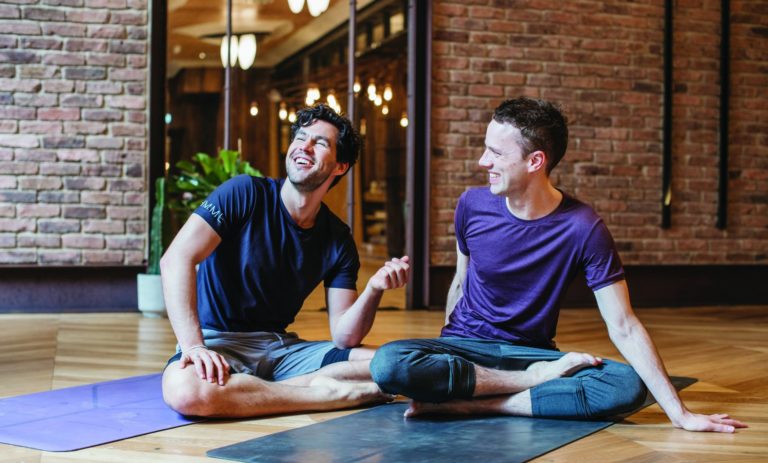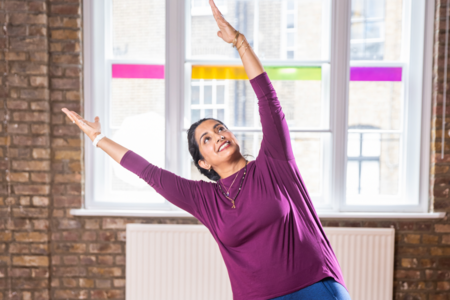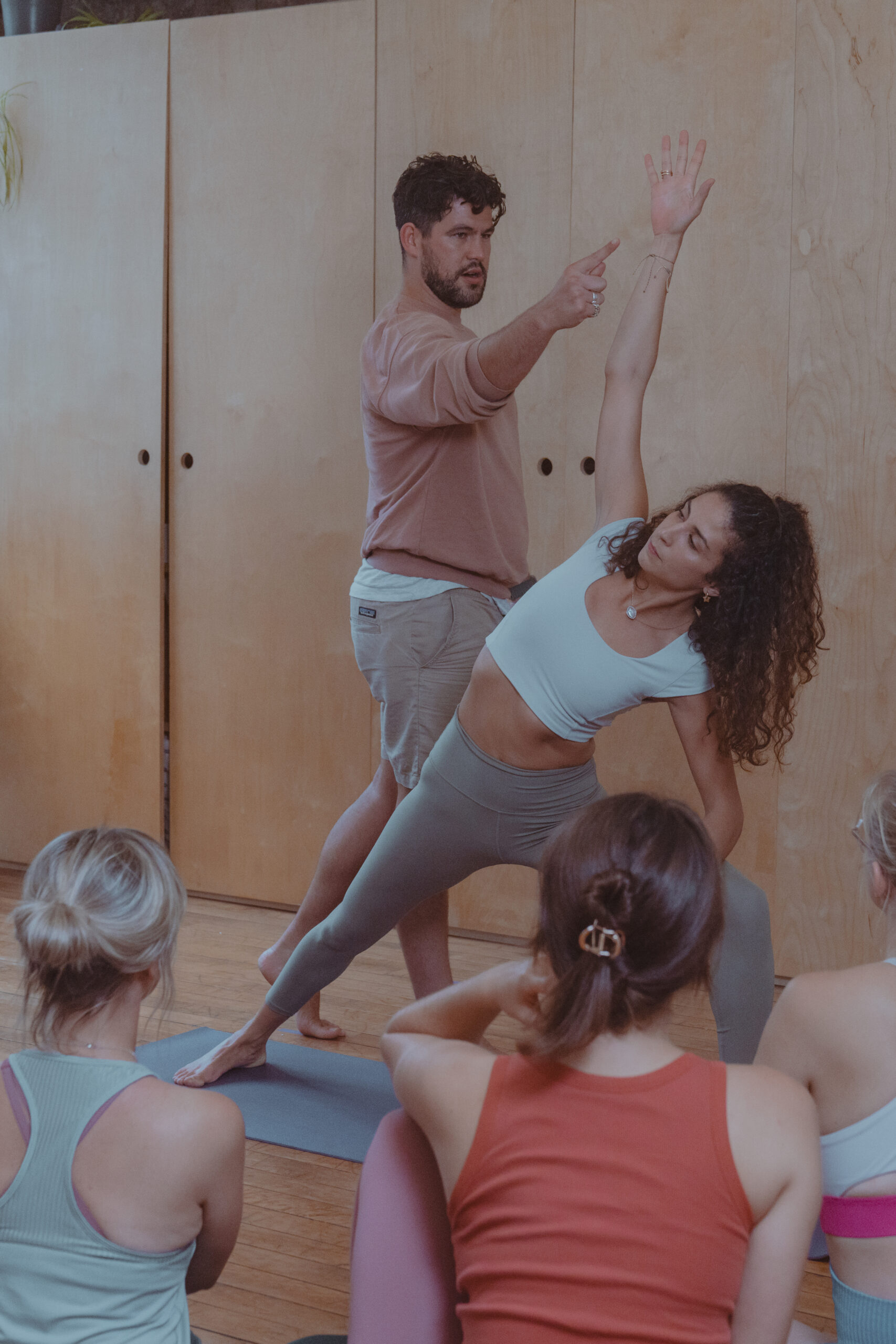Ahead of their upcoming weekend immersion on contemporary flow yoga, Adam Hocke and Adam Husler get back to yoga basics. They explore meaningful topics about the evolution of yoga such as – what yoga has always been, where it is now and where it can go if we all commit to the journey.
What is contemporary flow?
Millions of us practise yoga, but do we have any clue why we’re doing it and where it comes from? Do we understand its effects? What’s the right alignment? Are the poses safe? Is it spiritual or is it exercise?
Yoga has traveled a long way from its traditional Indian roots, and it’s quite possible that, without reflection, us new practitioners and teachers could totally muck it up. With the proliferation of styles, books, blogs, posts and podcasts, it’s understandable if you get overwhelmed and confused. So, in preparation for our weekend immersion on contemporary flow, we thought we’d get back to basic principles of what yoga has always been, where it is now and where it can go if we all commit to the journey.
What is traditional yoga, anyway?
It is important to know where yoga comes from geographically and metaphysically, and the late Georg Feuerstein is our go-to scholar. Feuerstein, who knows far more than us and nearly everybody else on the subject, defines yoga as the “technology of self-transcendence” that is “specific to the great civilization of India.”
In his ultra-handy Ten Fundamental Principles of Yoga, he lays down the law on what yoga is and isn’t. This is a big subject, but the important takeaway is that no matter what yoga techniques you use (postures, meditation, chanting and so on), the intention of the practice should be liberation from suffering, and specifically the mistaken idea that we are lonely and isolated individuals.
If we want to call the yoga we practise legit yoga, we better make sure that what we do contains a deep moral centre and spiritual aspiration guided by these Indian traditions or, as we teach, a belief system that is personally relevant and meaningful.
Where is yoga now?
Yoga has become mainstream and global. There are more people practising, more classes, more styles, more techniques, more research and more opinions than ever before. We see in our classes students of different ages, various body types, and wavering levels of mental focus and physical ability.
With experience, research and increased anatomical knowledge, teachers have begun identifying the common problems, injuries and failures of inclusivity inherent in the practice. Consequently, many of us are now starting to modify the physical practices of some of the more established systems of asana. Cross-pollination of styles and physical disciplines has given us many more tools and processes to use on the mat including tennis balls, resistance bands, functional movement drills and more. Sanskrit may be the least complicated language in use as phrases like ‘alpha wave modulation,’ ‘biomechanics,’ ‘interoception,’ and ‘proprioceptive neuromuscular facilitation’ have entered our new vocabulary.
With all this change comes a bit of anxiety and confusion. Do I need to have a PhD to understand my teacher? Have the traditional styles been diluted and lineages corrupted? Should we even call it yoga?
Where is yoga going?
We’ve always loved Feuerstein’s use of the word ‘technology’ to describe yoga, pointing both to its practicality and the occasional need for software updates. At least in the last 150 years, yoga has been in a continual state of evolution and cross-cultural and cross-discipline dialogue. In this spirit, as practitioners of contemporary flow we must keep one foot rooted in the rich traditions of yoga and the other foot stepping bravely forward into the exciting and sometimes daunting world of developing science and understanding. Whenever we get overwhelmed and need a reset, we can remember that at its heart the practice is about the lessening of suffering. There are many ways to work consistently and diligently towards this aim.
In this new world of contemporary yoga, and the variety of people who practice, there is no one size fits all approach. To that end, both of us believe in the power of the word ‘why’ as applied to our yoga practice. A well-pointed “why?” allows us to question the efficacy and intention of what we are doing physically, mentally and spiritually. From all the new information and tools available to us, we can then choose the right tool for the right person for the right reason. Or, at least, do the best that we can.
In conclusion
To bring this all together, “what is contemporary flow?” is still an open question, and we think that is a good thing. Certainty leads to intellectual and spiritual stagnation. We believe we can respect and preserve traditional practices while allowing for continual inquiry and creative adaptation to meet our contemporary needs. Each class, each workshop, each practice, we try to dive into this question and all the million “why’s” underneath. We’re doing our best to simplify what may seem complex and keep you engaged with the heart of your yoga journey. We hope that you will join us.










